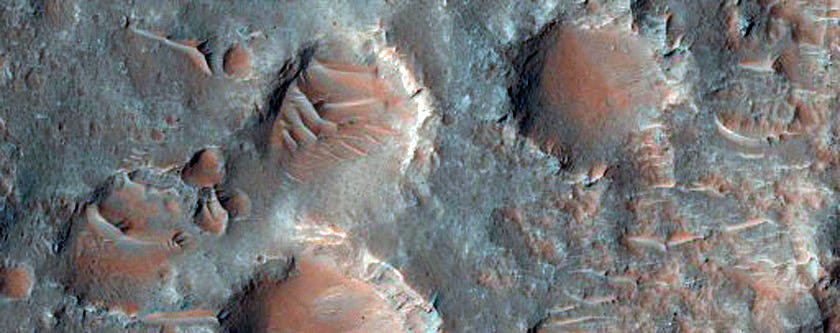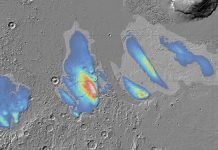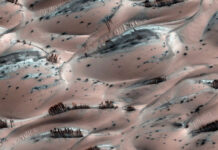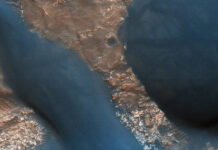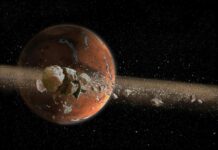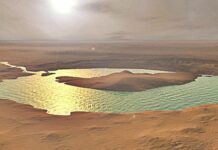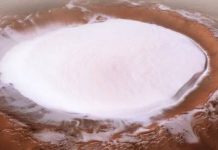If it’s quiet solitude and beauty you seek, there is no better place than the surface of Mars.
Mars has earned its moniker as the red planet, but the HiRISE camera aboard NASA’s Mars Reconnaissance Orbiter (MRO) can transform the subtle differences of soils into a rainbow of colours.
For 10 years, HiRISE has recorded gorgeous – and scientifically valuable – images of Mars.
Its photos are so detailed that scientists can examine the planet’s features at the scale of just a few feet, including the recent crash site of Europe’s Schiaparelli Mars lander.
We combed through 2,054 of the camera’s latest pictures, released in August, September, and October, to bring you some of the best – and hopefully help you temporarily escape Earth.
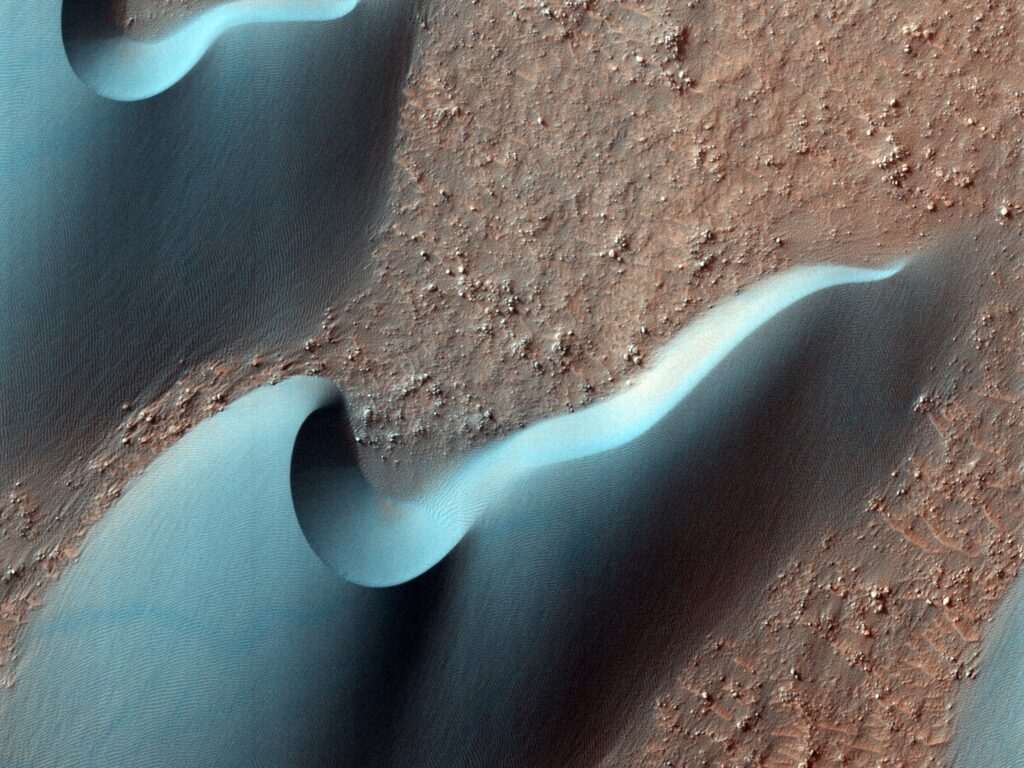
A large chasm:
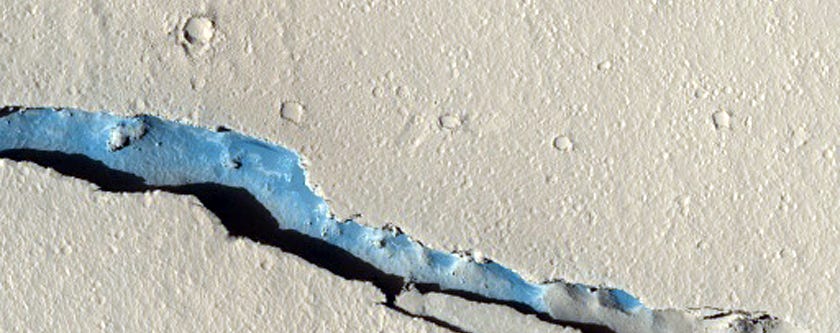
Some dark, rust-colored dunes in Russell Crater:
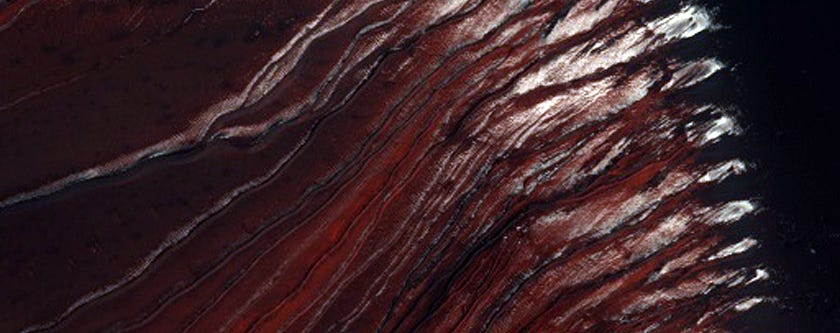
NASA might land its next nuclear-powered Mars 2020 rover mission here.
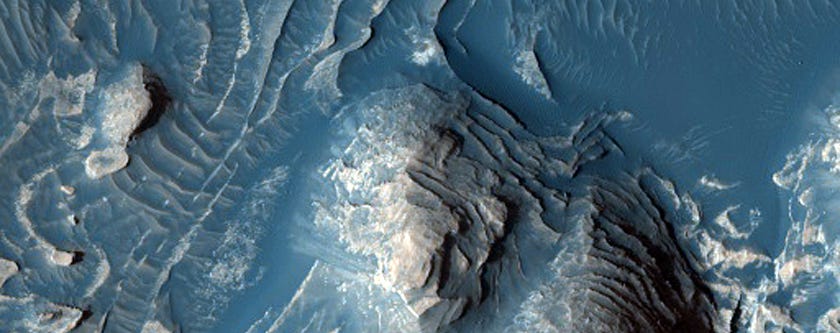
The black splotch is where the European Space Agency’s Schiaparelli Mars lander crashed. The white specks, pointed out with arrows, are pieces of the lander.
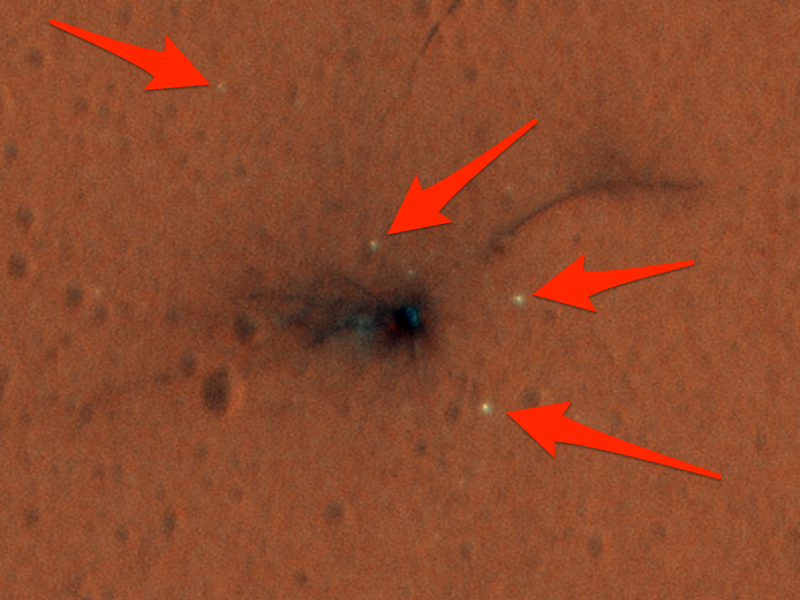
Zebra skin. Just kidding, this is a dune field that’s speckled with oval-shaped mineral deposits:
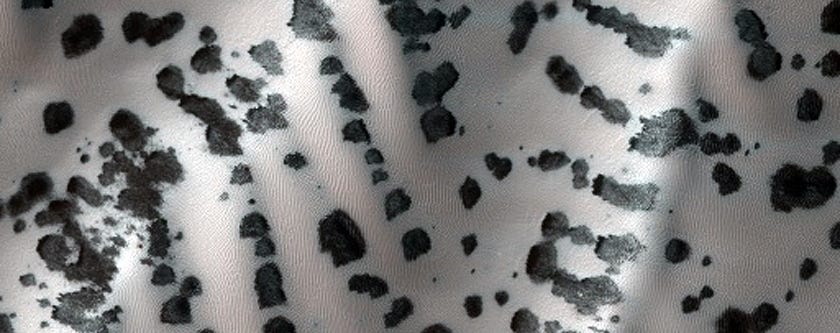
False-coloring this image makes a giant dune and its gullies look blue.

A possible landing site for the ExoMars 2020 mission, which the European Space Agency is running.
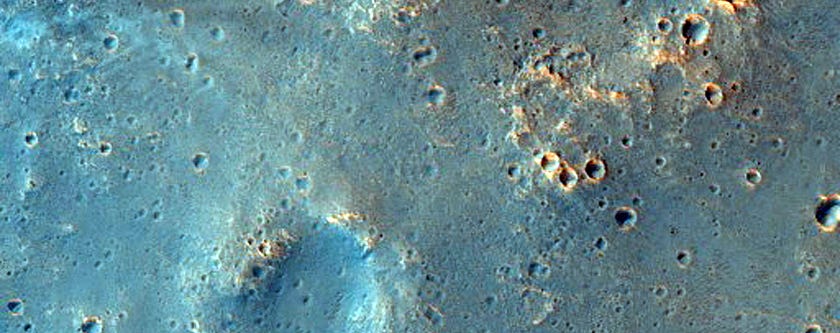
A North Pole dune field nicknamed “Kolhar,” after Frank Herbert’s fictional world.
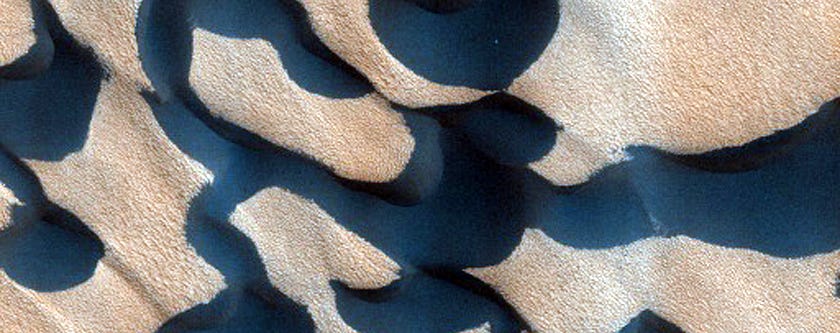
Carbon dioxide that turns from solid to gas carves out these strange shapes at Mars’ south pole:
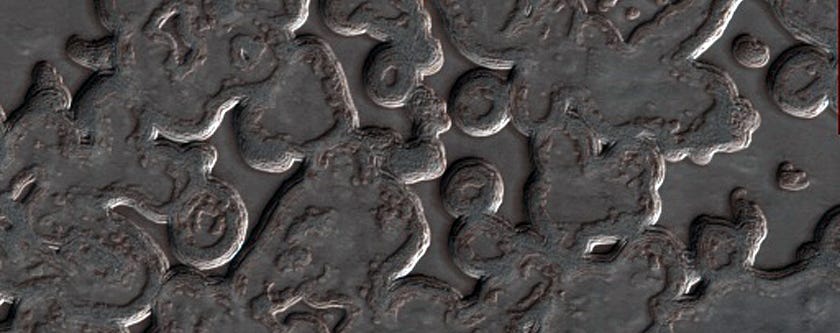
A recent impact crater on Mars. (We’re pretty sure no one put out a giant cigarette here.)
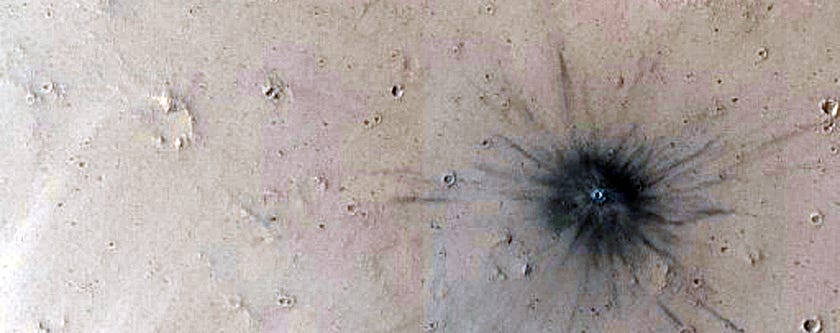
‘Spiders’ are eruptions of dust caused by the way the Martian surface warms and cools:
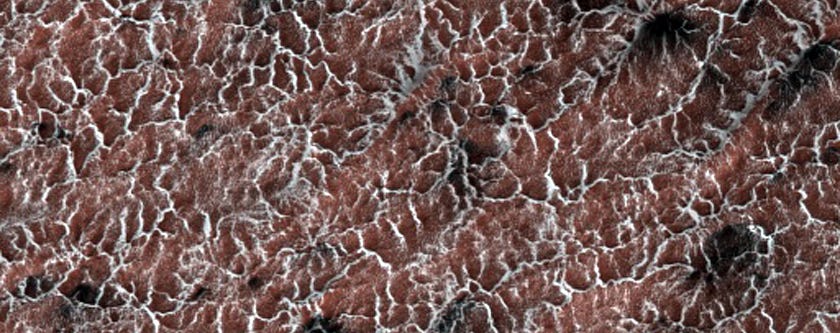
Cerberus Palus crater showing off layered sediments:
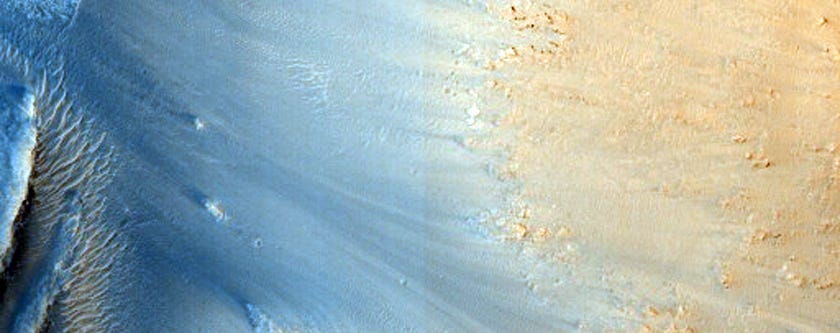
NASA keeps an eye of gullies like this for small landslides – and any water that melts in the warm sun to form darker-colored mud.

Another gully scientists are having HiRISE monitor:

Glacial terrain looks strangely iridescent:

A steep slope in Eastern Noctis Labyrinthus:
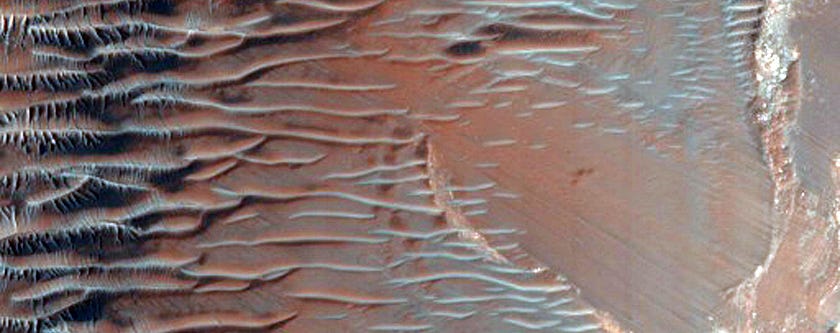
Dunes in a Martian crater. The red bar is an artifact of NASA’s image processing:
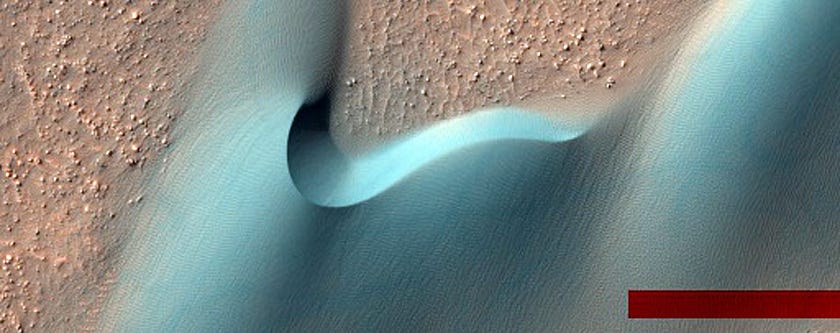
Wind-shaped dunes on Mars crawl across cracked soil in Nili Patera. The green bar is leftover from processing the image:
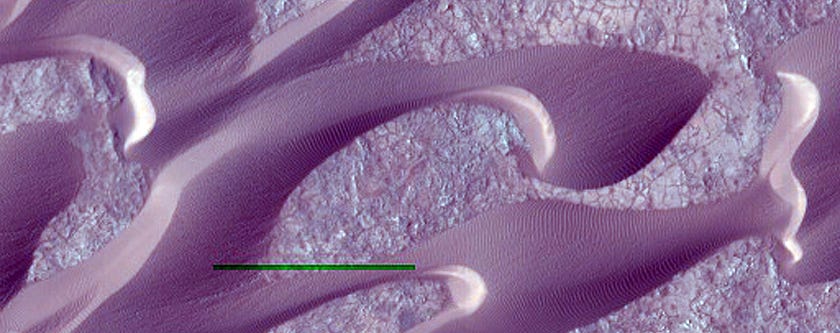
The same sand dunes in full color, a couple of months later:
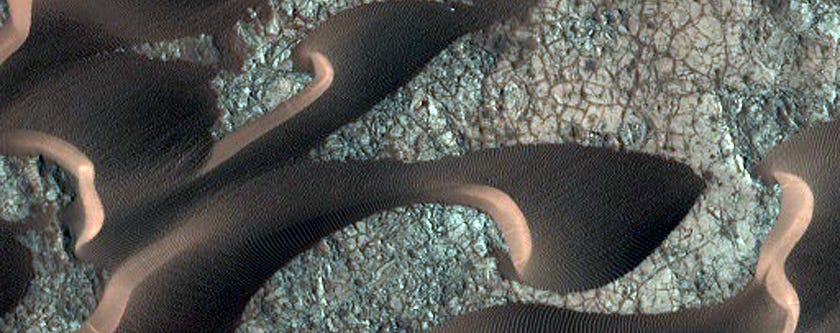
A crater on Arcadia Planitia, a large flat region of Mars:
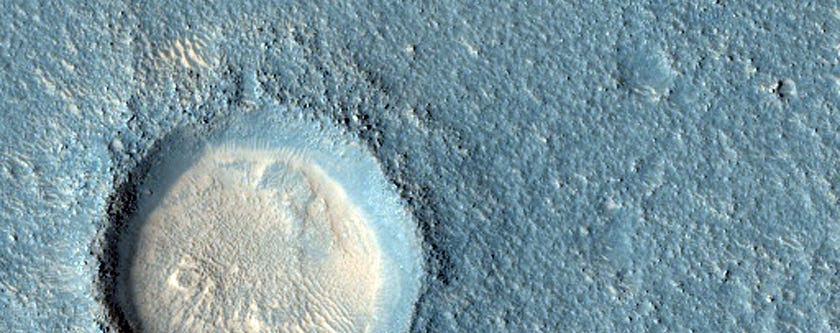
A small but recent impact crater:
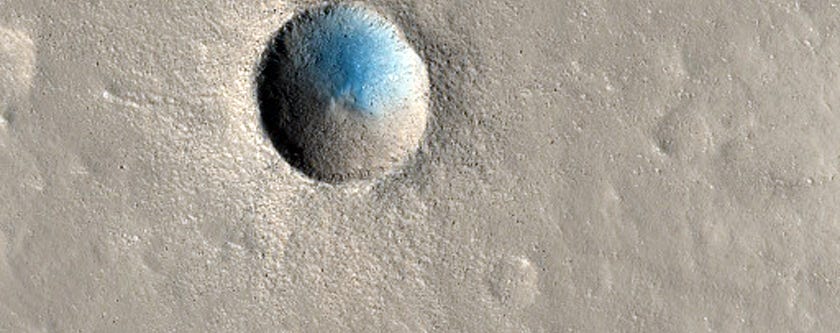
Blowing sand eats through the rims of older craters:
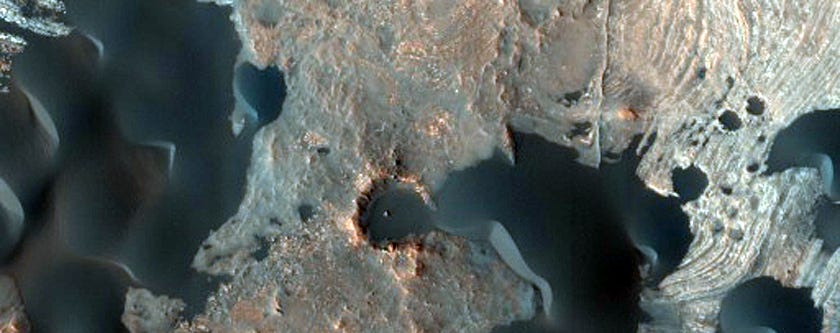
This is the edge of a special layered deposit at Mars’ south pole.
The false-colour makes the white look like ice, but it’s just one of the many layers of rock and soil.
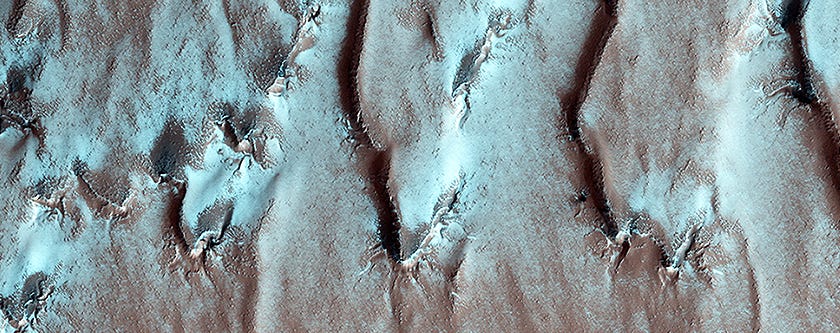
This crater near a region called Aonia Terra looks like part of the Death Star.
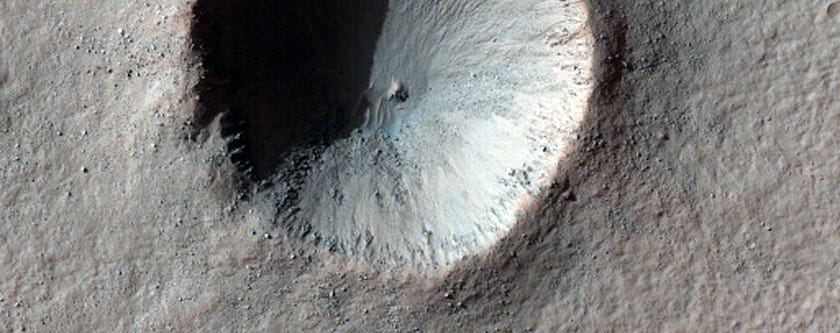
A fracture in the floor of Upper Morava Valles.
